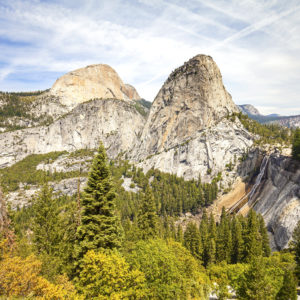Gabe Vasquez just came out and said it.
His panel discussion was well under way. It was his turn to weigh in earnestly about increasing racial and ethnic diversity of participation in America’s public parks. But in order to really get to that the subject — to really talk about what he was talking about — a little bluntness was required.
“Conservation, environmentalism, the green movement, protection of public lands — the majority of activities associated with those things are known by many in our Latino community, especially among young people, as things white people do,” Vasquez told a breakout session Monday afternoon at the Congressional Hispanic Caucus Institute conference in Washington, D.C.
Vasquez is certainly trying to change this reality through his work at the group Latino Outdoors, but at the moment Latinos “simply don’t have a strong sense of ownership of these lands in our community,” he said. “The average inner-city Latino will see a [Bureau of Land Management] sign, a forestry sign, a National Park Service sign, and they’ll think they’re trespassing.”
Solving this problem, which is undoubtedly unfamiliar to most white Americans, is one of the goals of the National Park Service as the agency celebrates its centennial this year. Estee Rivera, who coordinates the agency’s Every Kid in a Park program, said on the panel that increased racial and ethnic diversity for park staff is a high priority she and her colleagues are “working on.”
There’s a lot to work on, too. “Only about one in five visitors to a national park site is nonwhite, according to a 2011 University of Wyoming report commissioned by the Park Service,” reported the New York Times in 2013, “and only about 1 in 10 is Hispanic — a particularly lackluster embrace by the nation’s fastest-growing demographic group.”
Another of Monday’s panelists, Hispanic Federation Director of National Advocacy Laura Esquivel, noted that this has troubling implications for the future success of the Park Service, given that America’s minority population is projected to top 50 percent by 2040. Esquivel called on environmental groups to make more conscious efforts engaging Latinos, including breaking down barriers preventing them from feeling connected to parks.
“Why do more white kids grow up to be hikers and national park advocates?” she asked. “Admittedly, not all white kids grow up with parents who pitch tents on the weekend, but many of them do have the ability to send their children to summer sleepover camp, where children fall in love with the outdoors.”
In other words, Esquivel said, this is an economic issue as much as a cultural one. Camping should be inexpensive in theory, but Americans often need time to travel to a campsite — time off from work, specifically. Then there’s the issue of transportation and gear.
Vasquez said many Latinos, including city dwellers without cars, can’t easily get to national parks. They’re also unlikely to have or know about the kind of fancy camping equipment that, say, a white upper-middle class family might purchase.
Despite all this, Monday’s panel pointed out polling show Latinos actually value environmentalism and conservation more than other groups.

